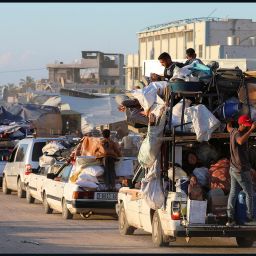Excited eclipse watchers, watch out: Weather could complicate attempts to see the epic astronomical phenomenon in parts of the Southwest.
Clouds and storms could hinder the ability to see the eclipse in its full glory in several spots along the path of totality — where the moon will completely block out the sun.
The most ideal weather for the eclipse will likely occur in two general areas: from Vermont through Maine, as well as Missouri through southern Indiana. Only a few isolated clouds are expected for these areas, which should not prevent optimal eclipse viewing.
So get your eclipse glasses ready for places like Evansville, Ind.; Carbondale, Ill.; Burlington, Vt.; and Caribou, Maine.
Some of the locations with less-than-ideal weather include portions of the eastern Great Lakes and much of Texas.
Cleveland, Ohio, and Erie, Penn., have a chance of rain mainly in the morning, but scattered cloud cover may be slow to exit the area even after the rain ends.
Farther east in Buffalo and Rochester, New York, cloud cover is expected to be between mostly cloudy and overcast — which will limit the viewing of the eclipse pretty significantly.
Then there are the southern cities, which not only have clouds to worry about, but also severe storms: There is a Level 2 of 5 risk for severe weather on Monday, potentially impacting much of Texas as well as parts of Oklahoma, Arkansas and Louisiana.
The risk for severe weather overlaps with portions of the path of totality, including over Dallas.
The National Weather Service in Dallas is forecasting mostly cloudy skies during the eclipse, with scattered storms starting in the early evening. The severe weather is expected to move into the region after the eclipse, but could be hazardous to those traveling through the area.
Keep up with the eclipse forecast here.









